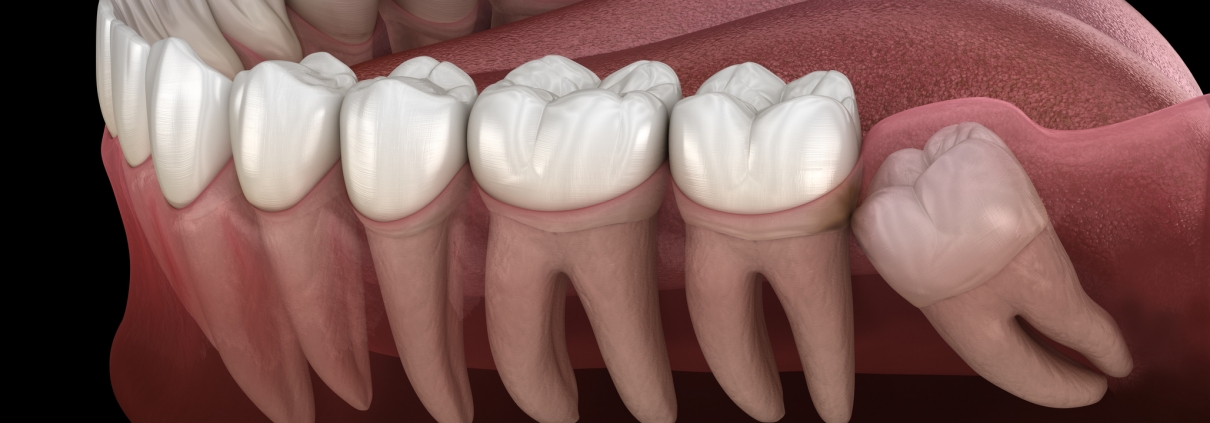What is a molar tooth?
Your orthodontist may have talked to you about molars during orthodontic treatment. To get acquainted with molar teeth, we will first provide a general description of the tooth. Teeth have the hardest structure among the body parts, in other words, they are the hardest and most rigid part of the body. The teeth are located in the oral cavity and on the gums in the upper and lower jaws and play the first role in eating and digesting food.
Types of permanent teeth
The main use of teeth is to grind and grind food or to physically digest food. Teeth in humans also play a very important role in speaking and pronouncing words correctly.
Permanent teeth are divided into 4 types and named. The front or incisor teeth are for cutting and shredding, the canine or canine teeth for cutting and tearing, the small mill or premolars for crushing and grinding, and the large mill or molar teeth for further wear and chewing.
The last three teeth on either side of the upper and lower jaws are called the great molars, the great molars, the molar, or the molar. The number of these teeth is a total of 12 molar teeth, which are called the first, second and third mills, respectively. The teeth of the first mill are located right next to the second teeth of the small mill or premolar.
The molar teeth have a large surface area for chewing. Also on the chewing surface of these teeth, which play a major role in abrasion and crushing food, there are several cusps or point protrusions that are used to crush food.
What is the structure of molar teeth?
The structure of the jaws and jaws is such that through the bone and the connection of the tendons and the muscles, it is possible to apply a lot of force with the aim of chewing and grinding by each molars. The eruption of molar teeth and how they are placed in orthodontics is of special importance.
In vegetarians such as cattle and horses, the molar teeth are flat and have relatively sharp edges. In these animals, the specific surface area for chewing molar teeth is higher and these teeth are mainly responsible for chewing forage. In fact, the type of molars or large mill teeth in vegetarians is adapted to feed on hard and dry materials.
In carnivores, the teeth of the large mill are sharper and their specific chewing surface is more limited than in the molar teeth of vegetarians. These teeth are also differentiated according to the type of diet of carnivores, with the priority of tearing and tearing the meat and then rapid chewing.
The importance of molar teeth in oral health and beauty
The first molar teeth play an important role in chewing. This tooth also acts as a guide for the growth of other permanent teeth and its presence has a significant effect on the natural shape of the jaws and ultimately the beauty of the face composition. If there is a disturbance in the growth of this tooth, it will cause misalignment of the teeth.
If we count the teeth of the two jaws from the midline of the teeth, the sixth tooth in each maxillary quarter (upper and lower jaws on the right and left) is called the first great molars, the first molar or the sixth tooth.
This tooth grows around the age of six and as the first permanent tooth in children’s mouths. For this reason, this tooth is sometimes referred to as the six-year-old tooth.
The first molar teeth play an important role in chewing. In addition, this tooth acts as a guide for the growth of other permanent teeth and its presence plays a significant role in the natural shape of the teeth and consequently the shape of the jaws.
Because permanent teeth are expected to appear in the mouth after the deciduous teeth loosen and fall out, sometimes parents do not notice the growth and permanence of the tooth, and in many cases, they sometimes realize its existence and Kelly pays attention to the molar teeth, which, in the examination of the teeth and mouth, the dentist discusses caries and the need to repair the first tooth of Asia Minor.
What is the third molar or wisdom tooth?
The teeth of the third large mill are known as wisdom teeth. These teeth are located at the end of the jaws and usually begin to grow around the age of 20.
The third molars have special problems, the main reason being the lack of space for the teeth to grow and compress on the jaw. Wisdom teeth remain under other teeth or bones and cause a phenomenon called impacted wisdom teeth, which is accompanied by pain and pressure in the jaw and sometimes requires surgery.

